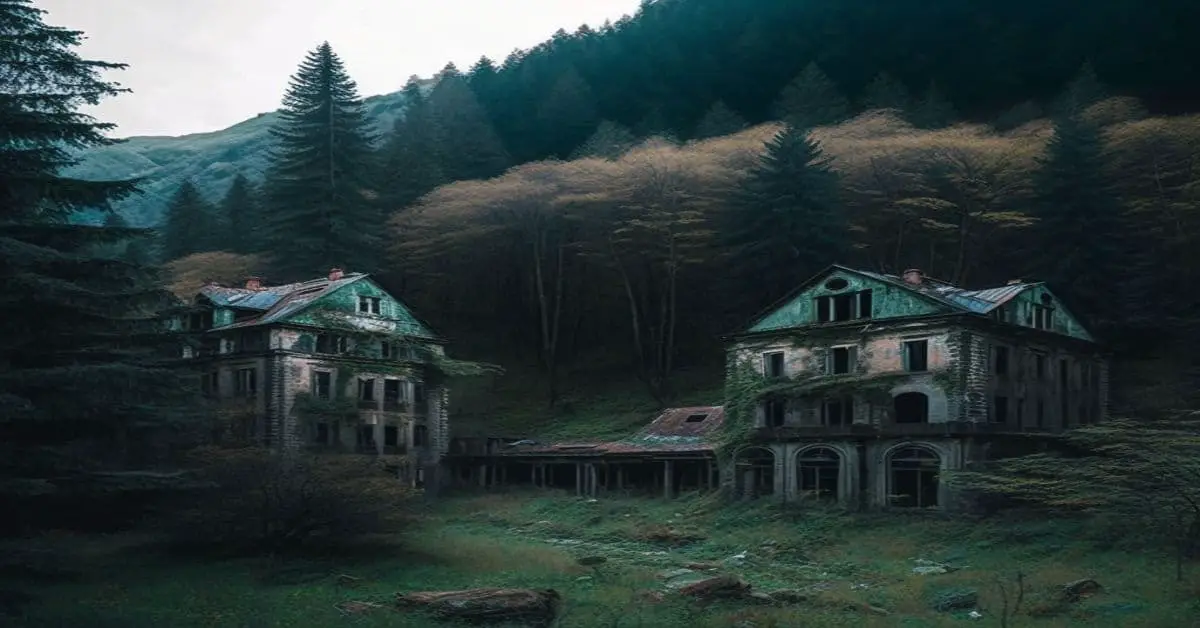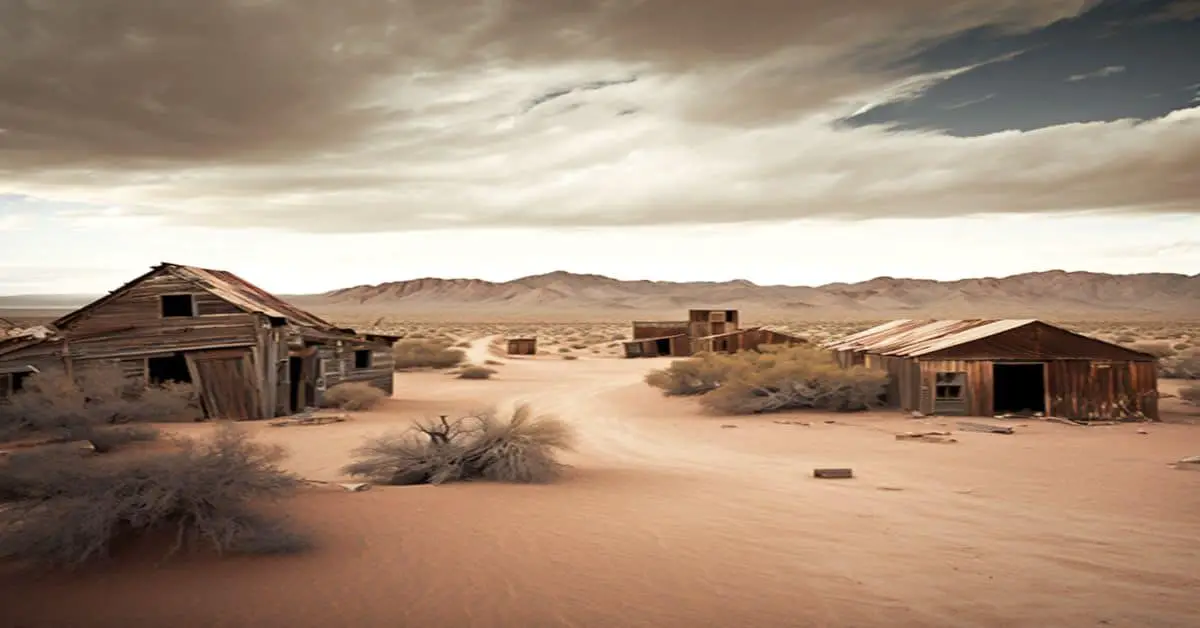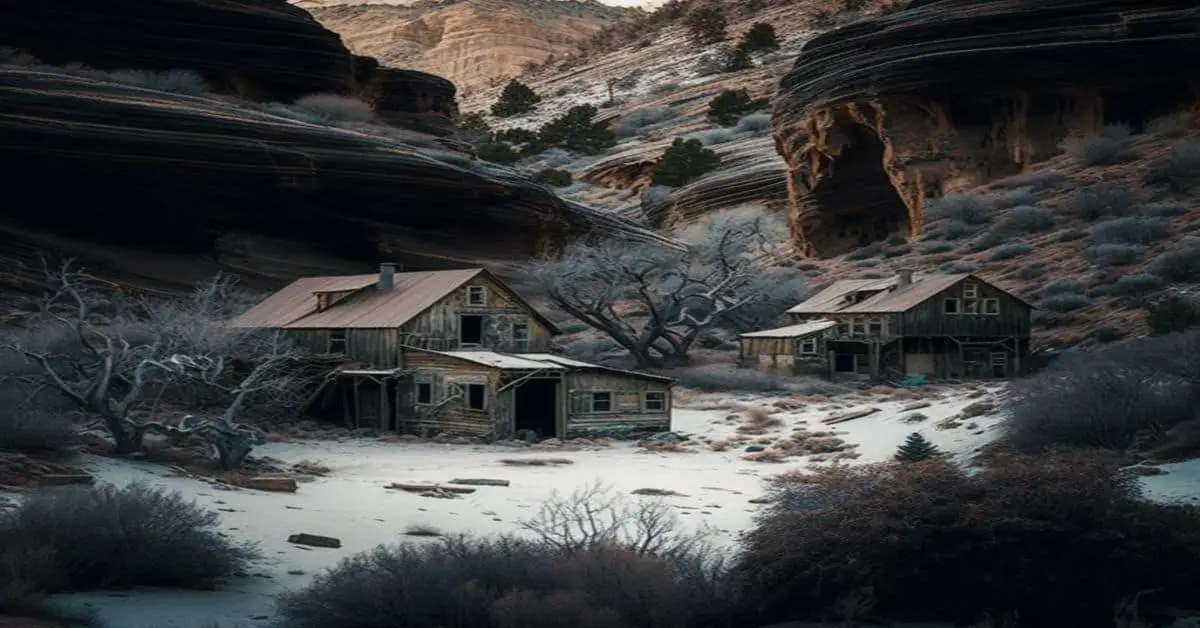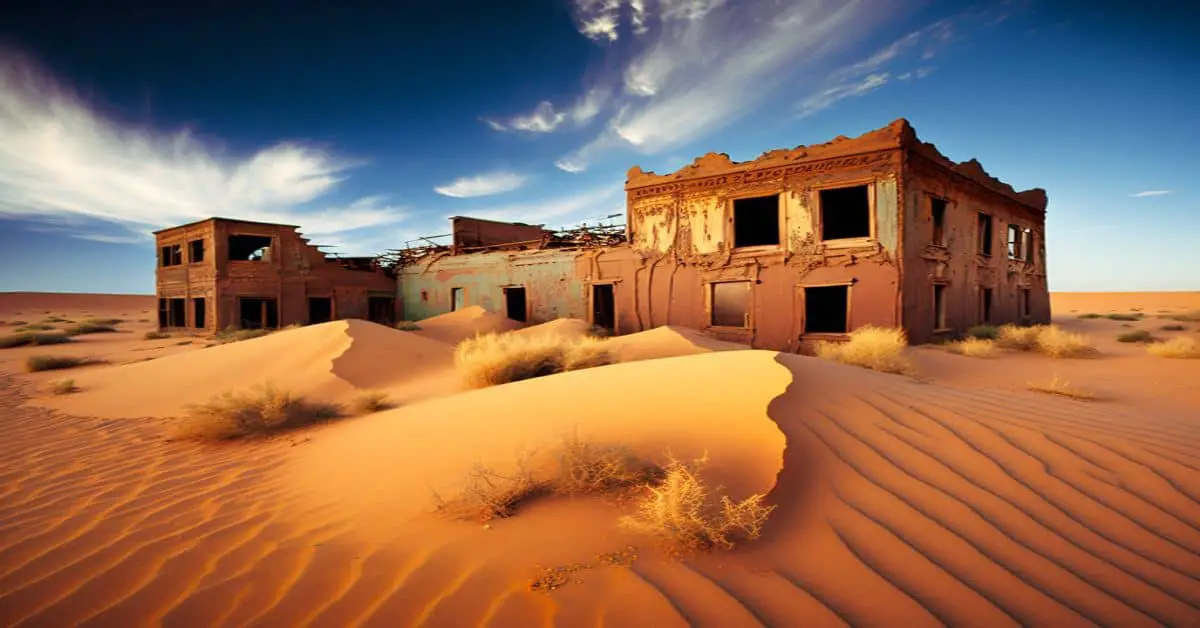California has many fascinating old mining camps and settlements, but these three stand above the rest. They were once bustling communities full of life, but now they lie abandoned and empty. Here’s why they should fascinate you too.
Coloma, California
Coloma was founded after John C Fremont discovered gold there during his survey expedition into northern California. He named the settlement “Gold Bluffs” but later changed it to Coloma. During the 1850s, prospectors flocked to the area to search for gold. By 1860, over $100 million worth of gold had been mined from Coloma alone. Today, Coloma has become a ghost town; only ruins remain.
In 1849 James Marshall discovered gold at Sutter’s Mill near Sacramento. He had been building a large grist mill but decided to make another smaller sawmill. The new mill would produce boards used in shipbuilding and railroad ties. On December 28th, 1850, the first shipment of rails arrived. By 1851, over 500 miles of rail line stretched across Northern California.
Sutter’s dream of creating California’s greatest city was destroyed after gold was discovered near Coloma Creek. Native Americans were forced off their land and had no place else to live.
Coloma was founded during the gold rush days in 1849 when hundreds of thousands of fortune seekers flooded through San Francisco looking for riches. At its peak, there were over 500 saloons, brothels, gambling halls, dance houses, restaurants, hotels, blacksmith shops, livery stables, barbershops, drugstores, doctors’ offices, dentists, lawyers, tailors, shoemakers, clothing retailers, real estate agents, auctioneers, undertakers, photographers, and many other types of businesses.
Many of these establishments had been operating before the arrival of the miners; however, once word got around that gold could be found in the Sierra Nevada Mountains, the population exploded. By 1850, there were over 10,000 residents in Coloma alone.
During those years, the average cost of living was $25 per month. Food costs averaged $2.00 per meal. Housing ranged anywhere from $10-$100 per month, depending upon location within the city limits. Clothing prices varied widely according to the material used and style. Shoes ran anywhere from $1 -$5 each. And although a miner would earn only $4.00 per week, he still spent money like crazy buying food, drink, lodging, entertainment, etc.
For example, a man working 8 hours a day, five days a week, earned just $20 per month. However, after paying rent, utilities, taxes, insurance, groceries, laundry, doctor bills, dentist visits, haircuts, etc., he made only $2.60 weekly. To put this in perspective, a single mother raising four children and doing housework could barely survive on $6.00 per week. So, life was tough in Coloma during the Gold Rush era.
In 1850, California was admitted into the Union as the 31st state. At that time, Coloma became the county seat. The gold rush created a demand for local government services, including roads, schools, law enforcement, courts, and fire protection. Water came down from the Sierra Nevada Mountains through a system of ditches called “ditches” or “ditch lines.”
These ditches were dug by hand using shovels and pick made of wood. They ran along the sides of the mountain range and carried runoff from the surrounding land to the riverbed below.
Captain Shannon ruled over law and order of the town through fear. His punishments included hanging, branding, whippings, and ear cuts. People knew they had no recourse against him and would do well to stay within his rules.
As with any boomtown, the good times couldn’t last forever. Miners started spreading throughout the area, searching for ever richer strikes, and Coloma began losing its population. Also, in 1854 it lost its distinction as the county seat, which was moved to Placerville, as there was much more mining activity there than near Coloma.
Coloma was once a bustling mining community. Only a handful of residents remain at the former gold rush campground. Visitors can see the remains of homes, shops, and businesses that were left behind during the boom years of 1849–1850.
Bodie, California
In 1859, William S. Bodey discovered gold along with three other men in a spot named Bodie Bluff. He kept the news secret until he could bring in another partner. That man was Black Taylor, a Cherokee Indian. Together they built a cabin and stocked it with food and supplies for the harsh winter ahead. On February 21st, 1860, Bodey set off alone into a storm. His body was never recovered, but the gold was worth $1 million.
Bodie was once just a mining town, but now its name has become synonymous with wealth. After years of neglect, the city boomed after significant discoveries at nearby Gold King Mountain. Today, the population of Bodie is around 2,500 residents. There are still plenty of opportunities for those looking to find riches in the mountains.
Now its population has dwindled to just over 2,500. Its historic buildings sit empty, abandoned, and crumbling, waiting for someone to decide they’re worth saving. There’s still plenty of evidence of life here – including bars, restaurants, hotels, and casinos. And although many of these establishments cater primarily to tourists, locals enjoy a drink at night too.
In 1882, miners discovered gold at Bodie Island. Although the island wasn’t officially incorporated until 1913, its residents were already calling themselves Bodians. By 1900, over 2,500 inhabitants were living here. During World War II, Bodie served on a U.S. Navy base. Today, Bodie has become a ghost town, but visitors still enjoy hiking along the trails and visiting historical sites.
In 1881, the Standard Mining Company and the Bodie Gold Mines combined into one company called the Bodie Consolidated Mining Company. By 1887, the Bodie mine had become the largest producer of gold in California history. Over its lifetime, the Bodie mine produced over $100 million worth of gold.
In the late 1800s, most of the town burned down after being struck by lightning, but the following year, another fire consumed much of the remaining buildings. Soon afterward, the mining operations ceased due to low ore prices. At its peak, there were over 300 residents living in the ghost towns of Bodie. Of those, only four survived the mysterious fires.
In 1849, Bodie was founded as a mining camp. Soon after its founding, gold was discovered nearby. By 1850, over 200 miners were living here. However, many left the settlement due to poor management and a lack of supplies. After 1860, the population dwindled until only 25 residents remained. Today, Bodie is preserved as a state historic park. No buildings remain inside the original town limits. However, visitors can see the ruins outside the boundaries.
Bodie has many legends surrounding it. One legend says that a little girl named Mary once lived here. She had red hair, and she liked kids. Her parents were afraid to let her play outside alone, so they ensured she never went anywhere without someone watching over her. They would follow her everywhere until, one night, she disappeared into the woods.
No one ever saw her again. Another legend tells of a man named John who came to live near Bodie after losing his wife and daughter in a tragic accident. He built a cabin nearby and spent much time praying at the site. His prayers seemed answered when he received word that his family was alive and well. However, soon afterward, his son fell ill and died.
After burying him, John decided to leave Bodie forever. Many years later, he returned to visit his grave only to find that his house had burned down. There was no sign of his wife or daughter either. Nowadays, visitors still see signs warning against trespassing on private property.
Calico, California
Gold was first discovered near present-day San Francisco in 1776, but its value wasn’t realized until after California gained statehood in 1850. Gold mining boomed throughout the late 1800s, creating a boomtown atmosphere in San Francisco. By 1880, gold production reached over 200 million dollars annually, and many wealthy businessmen made fortunes during those early days.
However, the discovery of Silver at Calico Mountain in 1875 changed everything. Thousands of miners flooded the mountains within five years, building homes and businesses. Many towns sprang up around these mines, including Calico City, now called Colton. Today, there are still plenty of opportunities to explore the region’s history through museums and sites like Fort Ross State Historic Park.
In 1880, Calico began mining operations after discovering borax deposits at Borate Mountain. By 1886, the town had reached over 2,500 residents. During the early 1900s, the mines hosted various social events, including dances, picnics, sporting events, horse races, and rodeos.
However, due to the lack of transportation, many workers moved elsewhere, looking for better opportunities. In addition, introducing new technologies like mechanized shoveling made working underground much safer. These factors led to the decline of Calico. After World War II, the mine closed down completely. Today, only ruins remain of the once-thriving community.
The boom never lasted forever, and Silver fell from $16.50 per oz to just 31 cents per oz during the early 1990s, which sealed the fate of Calico. The Calico Railroad closed when Borax Mining stopped in 1907, and the town was declared officially dead.
Knott’s Berry Farm opened its doors in 1952. Walter Knott purchased the land in 1950 and began restoring many old structures, including the train depot, the water tower, and the historic hotel building. Today, only about 30% of the original town remains. Visitors can walk along the streets, visit shops, take rides on trains, see animals at the farm, and enjoy live entertainment throughout the year.
Calico Ghost Town was built around 1874–1880 by the Southern Pacific Railroad Company to serve its workers at nearby mines. Today, visitors enjoy the ghost town’s old buildings and Western atmosphere. There are many shops selling souvenirs and food items along Main Street. Visitors often take photos next to the replica saloon sign or ride the train into the mountains surrounding the town.
Calico is said to be haunted by many spirits. One of these spirits is Lucy Bell King Lane. She lives in the old courthouse building and often walks around the town. Another spirit is seen as a child waving from inside the schoolhouse. Many believe this is Mary Ann Brannon’s ghost, who died during childbirth. Lastly, there is a bearded gentleman named Tumbleweed Harris. He worked here as the town Marshal for over seven years.
Calico is a fun family vacation spot. While you’re here, don’t forget to try the famous Root Beer Float.



